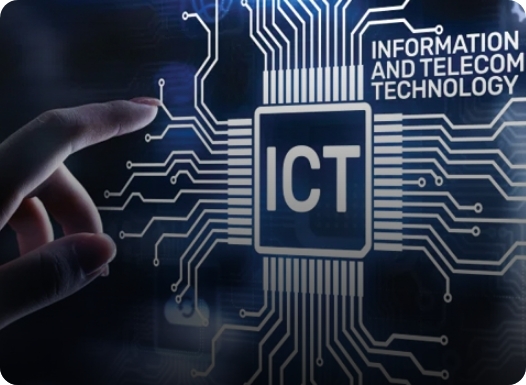Information & Communications Technology (ICT) will be the key enabler of many high-growth industries in India including Biotech, pharmaceuticals, advanced materials and even energy. An insight
We are nearing the end of a true “annus horribilis” for the world and the country. As we prepare for what will hopefully be a vaccine-induced better 2021, there is still the sobering thought that the Indian GDP will decline by at least 9 per cent this financial year and even if we grow low double digits in 2021-22, we would just about see our country in the same place in March 2022 as it was in March 2020.
The time has come for all intelligent and patriotic Indians like the readers of this column to start thinking about opportunities to get the country to grow faster, which is what all of us owe to the hundreds of millions of people in Bharat to dream of and achieve a better quality of life. For a start, we can consider what it might take to accelerate the achievement of a trillion-dollar Digital India. While we have built an outstanding Information & Communications Technology (ICT) industry with a dominant market share in IT, Engineering, BPM and Product Engineering services in the world, we have missed the opportunity in core ICT, which has the potential to become a 200 billion dollar industry by 2030 by which time the existing 190 B services sector can grow to 300 billion.
To understand Core ICT, look at the three layers. The Applications layer is at the top with key vertical domains like Banking and Retail, Healthcare and Social Media and Defense and Cybersecurity. These applications rest on the Services layer, which includes the internet, cloud data centers servers, wireless and Artificial Intelligence (AI). AI is still early in its maturity but is likely to grow in value, touching every application and even creating opportunities for specialized service providers. These services use Core ICT products, which were brilliantly articulated by Professor Paulraj of Stanford in a speech, which will help you to understand the opportunities in this area.
The Core ICT layer includes base stations, routers, blade servers, phones, laptops, etc., that are built using semiconductors like semiconductor chips, hardware processors and other components like optoelectronics and sensors.
A big frontier for Core ICT systems is Cloud for 5G, which Mukesh Ambani in the India Mobile Congress has promised to make happen in India by second-half of 2021. This will need a new class of server blades with the capability to support wireless networks with multi-gigabit per second throughputs.
Important thrust areas in semiconductors include special purpose engines for deep neural networks capable of handling large modelling applications with large volumes of data and co-packaged optical transmissions with massive processing power bits per second and connectivity from a single chip. Through Core ICT, the industry will move from just software to hardware along with embedded software and firmware and this will be the passport for India to be a true participant in the multi-trillion dollar global core ICT industry.
We need to consider areas where we can have “less China” like mobile phones & consumer electronics
ICT will be the key enabler of many high-growth industries in India including biotech, pharmaceuticals, advanced materials and even energy. India’s best bet to enter the Core ICT eco-system is to grow new companies while expanding the existing industry efforts in this area. We need entrepreneurial university researchers and engineers from industry, and indeed also international talent-much as it is in the Silicon Valley. India also needs more business development and product management skill sets, which should attract from outside the country.
The initial opportunities for India will be in the design layer systems and semiconductor design where the engineering skills sets are largely available, and investments are relatively smaller. However, semiconductor and other component manufacturing are important too, and careful planning will be needed to build this sector. It will take time, due to the low existing skill levels in the country and the very high investments needed. India will become a genuine member of the Core ICT Club when it builds a few Indian headquartered companies with multi-national operations and commands a fair share of Intellectual Property and Essential Patents.
A reasonable 10-year target for India in Core ICT can be a 5% share of global revenue, which means a $200 billion plus per annum value addition by 2030. Even this 5% goal is a very tough one-India will have to grow 100% Year-on-Year from our current low base to reach that target. No doubt challenging, but certainly possible. Indian engineers have what it takes and we now have the ability to be part of a China-less supply chain, attract global venture capital services and build the $200 billion Core ICT capability for the country. We have a large agenda to build an “Atmanirbhar Bharat” and need to address at least four or five industry areas, each of which can add a trillion dollars to the economy and one crore jobs each. As one of our luminaries in Pune is fond of saying, we need to consider areas where we can have “less China” like mobile phones and consumer electronics, be more self-reliant in Telecommunications and 5G and “China less” in ICT, Chemicals, Agriculture Pharmaceuticals and AI. Let us resolve to get there.
